Abstract
1. Conventional inspiratory CO2 loading (CCL) is accomplished by having the subject breathe CO2-enriched air. An alternative method of CO2 loading is to inject a bolus of CO2 at the start of each inspiration into the inspired air: slug CO2 loading (SCL). During SCL PCO2 in the conducting airways declines quickly towards 0 kPa in the course of inspiration, whereas PCO2 remains at a constant value equal to the inspiratory PCO2 during CCL. Therefore, CCL and SCL may stimulate the respiratory controller differently. 2. We compared the ventilatory responses to SCL and CCL in fourteen anaesthetized, spontaneously breathing cats. In each experimental animal we applied, in a fixed randomized order, five CCL experiments (fractional inspiratory CO2, FI,CO2 = 0.01-0.05), six SCL experiments (slugs of 50% CO2 ranging from 0.5 to 6 ml) and three control experiments in which no CO2 was loaded. Partial pressure of CO2 in arterial blood was determined from small blood samples (0.14 ml). In three cats we repeated the experiments after bilateral transection of the cervical vagi to evaluate the contribution of vagal receptors to the responses observed. 3. The average slope of the CO2 response curves for SCL was 2 times steeper than that for CCL (P less than 0.01). The larger minute ventilation for SCL for a particular value of arterial PCO2 (Pa,CO2) could not be attributed exclusively to the increased breathing frequency or the increased tidal volume (P greater than 0.10). Further, mean inspiratory flow (VI) was larger for SCL than for CCL at the same Pa,CO2 (P less than 0.01), also because the ratio TI/TE (inspiratory duration/expiratory duration) was smaller (P less than 0.01). After vagotomy the difference between SCL and CCL response curves was much reduced. 4. It is concluded that SCL and CCL affect the respiratory controller in a different way causing differences in breathing pattern and CO2 sensitivity between the two methods. Evidently, a mechanism based on CO2 sensitivity of pulmonary receptors is involved in the responses observed.
Full text
PDF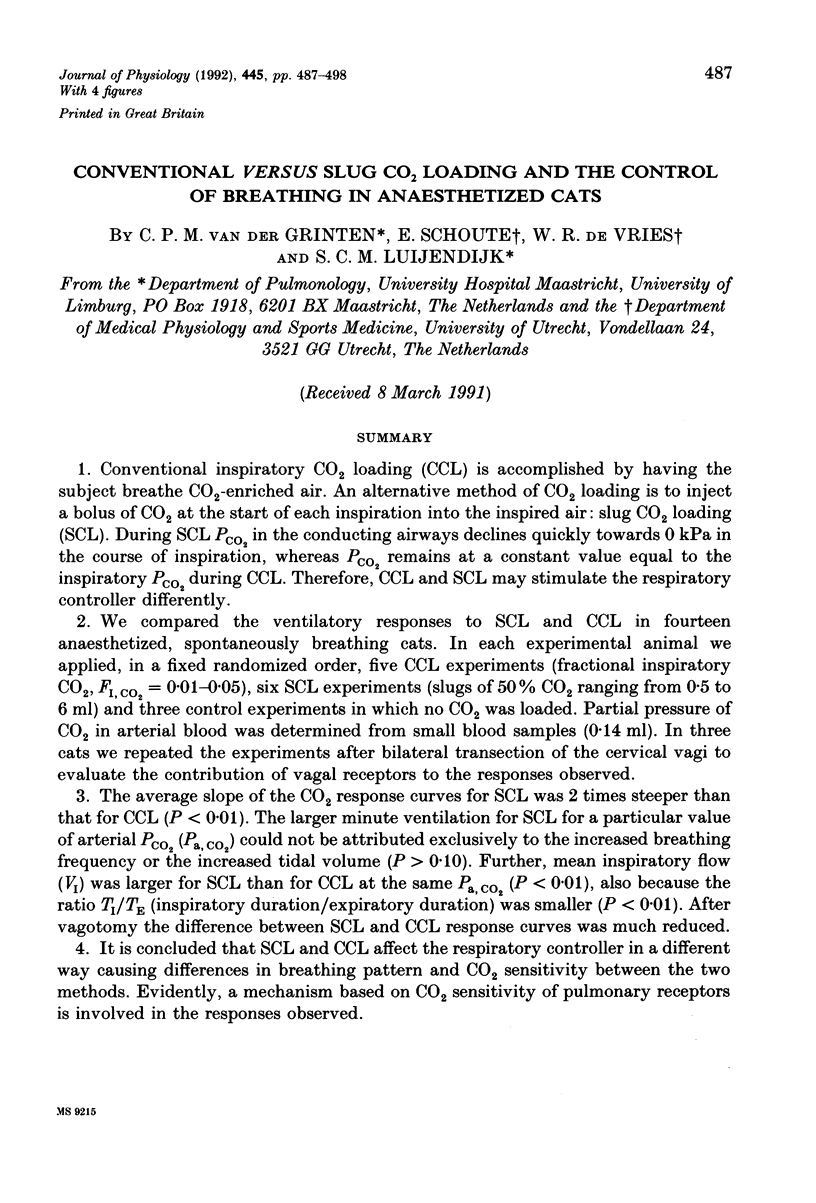
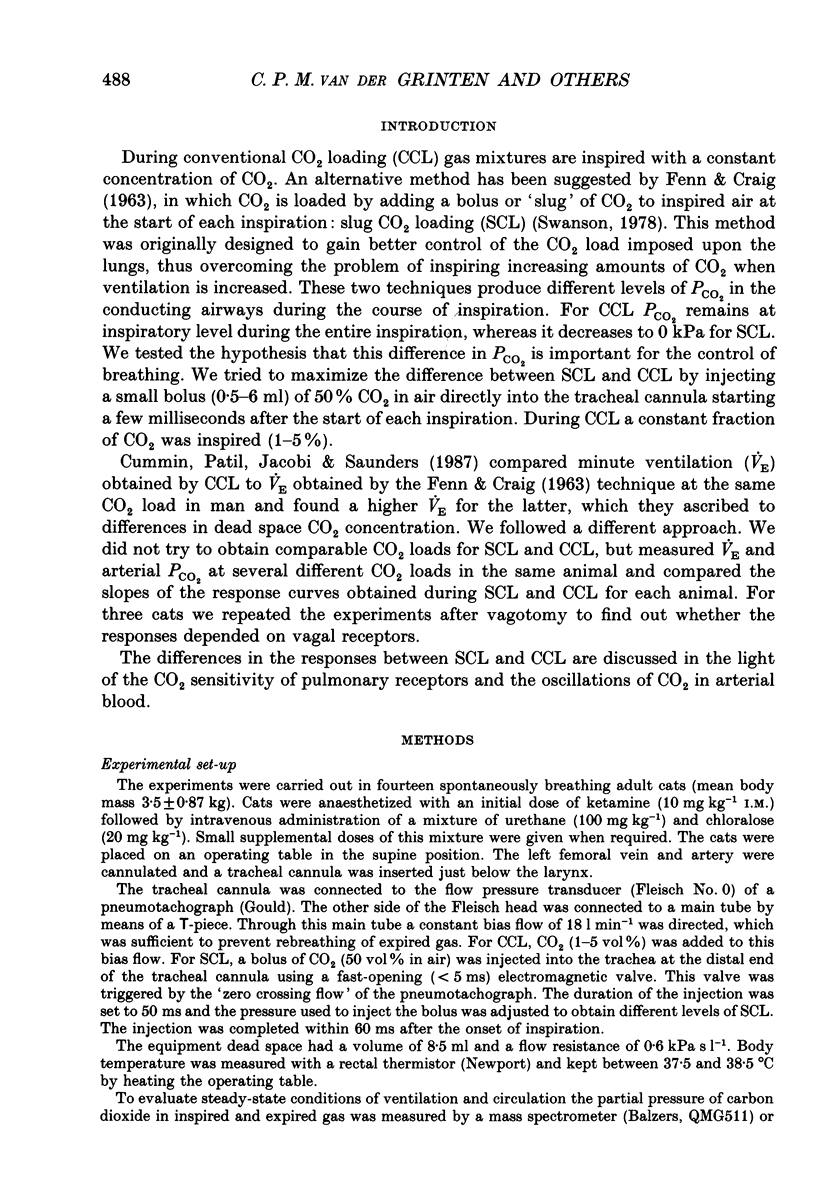
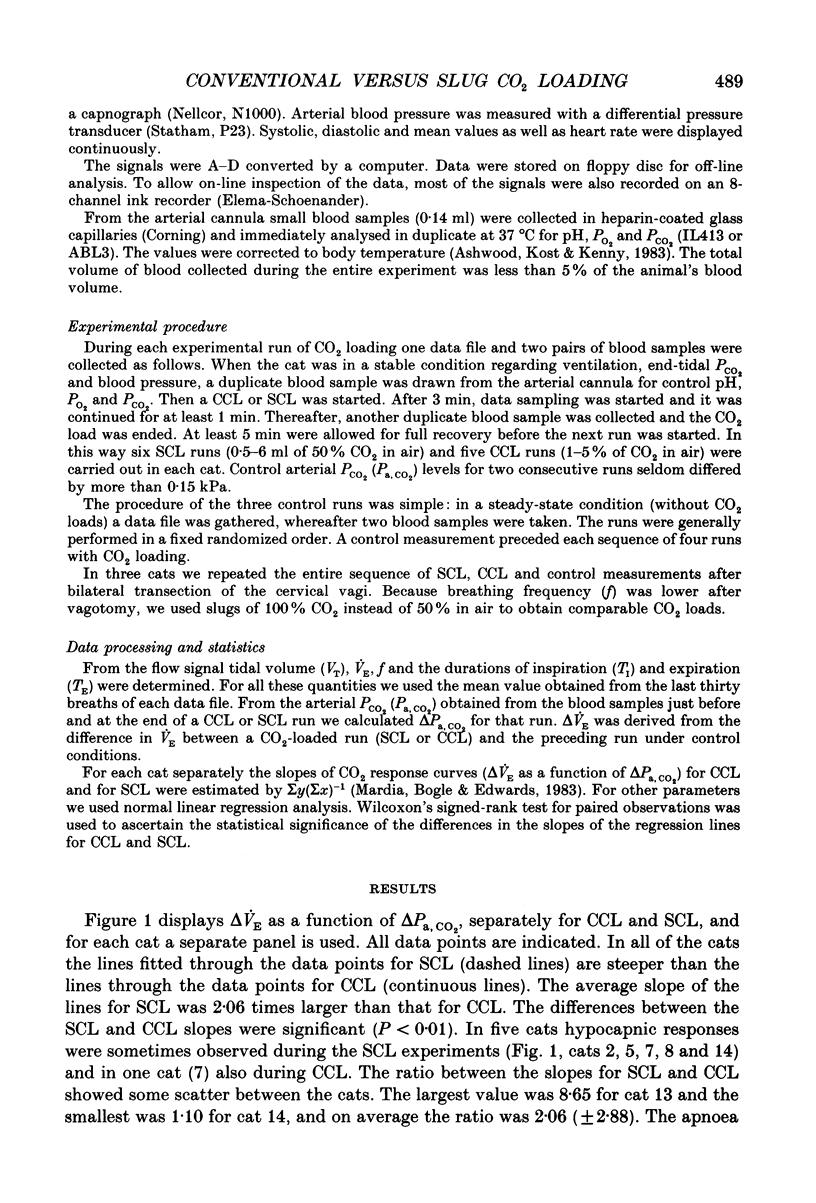

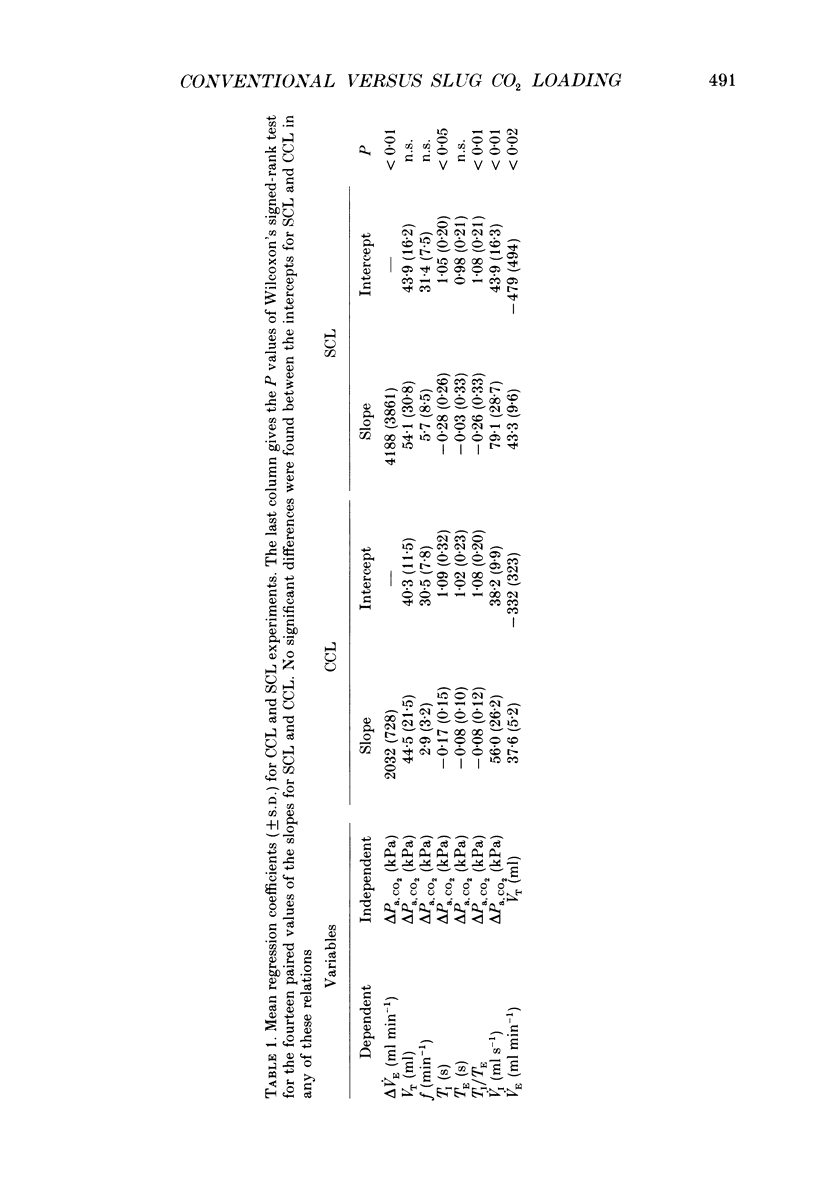
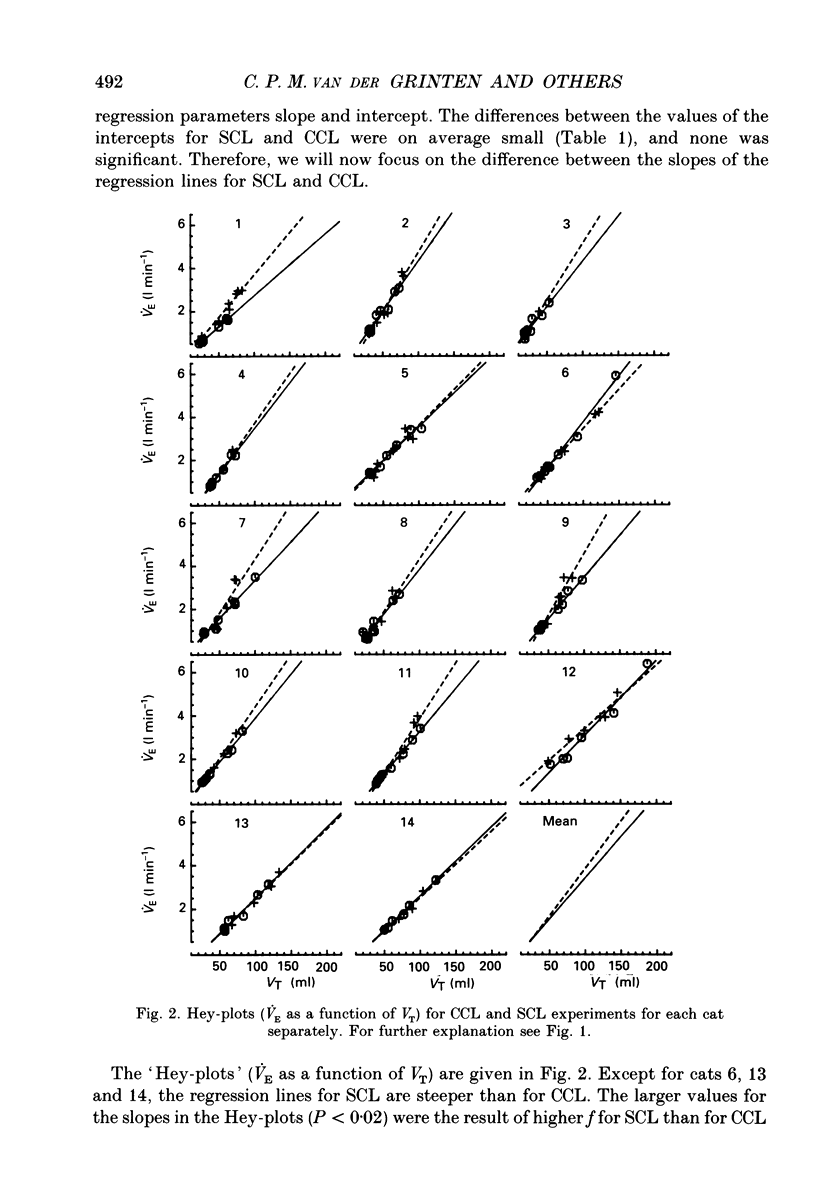
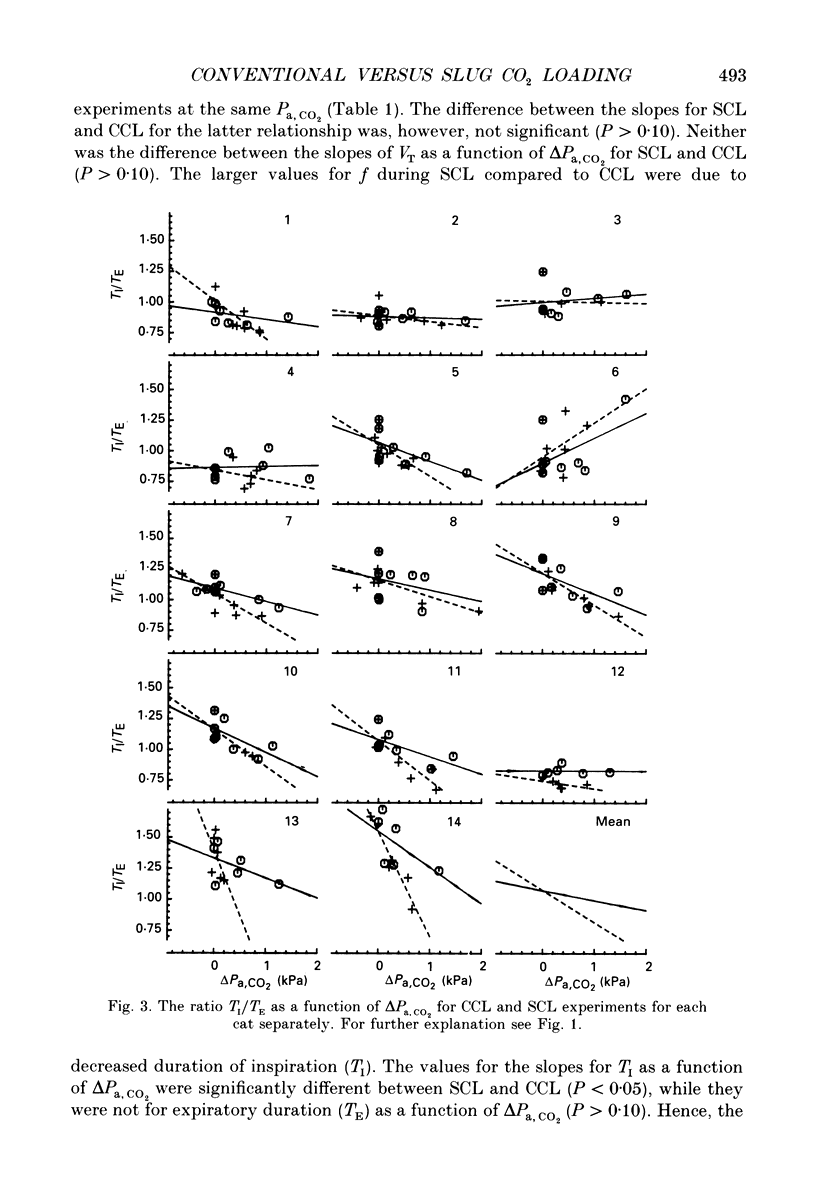
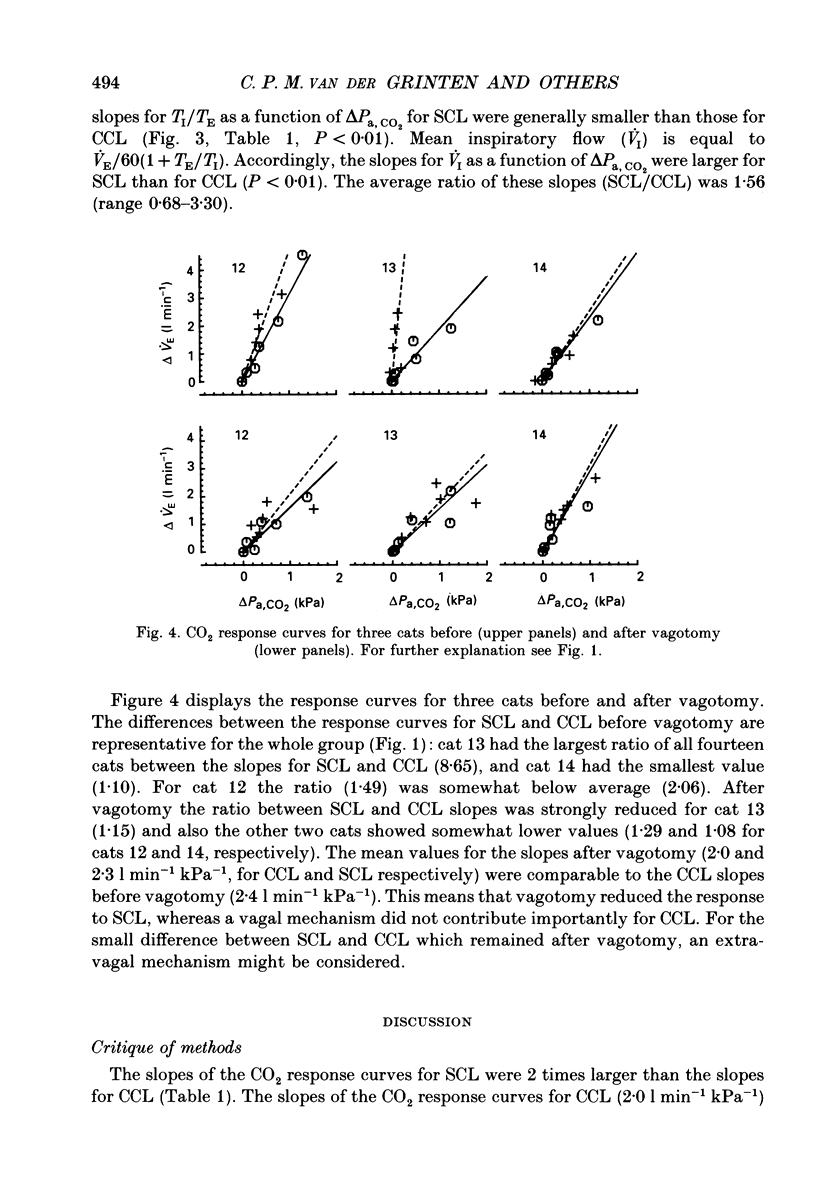
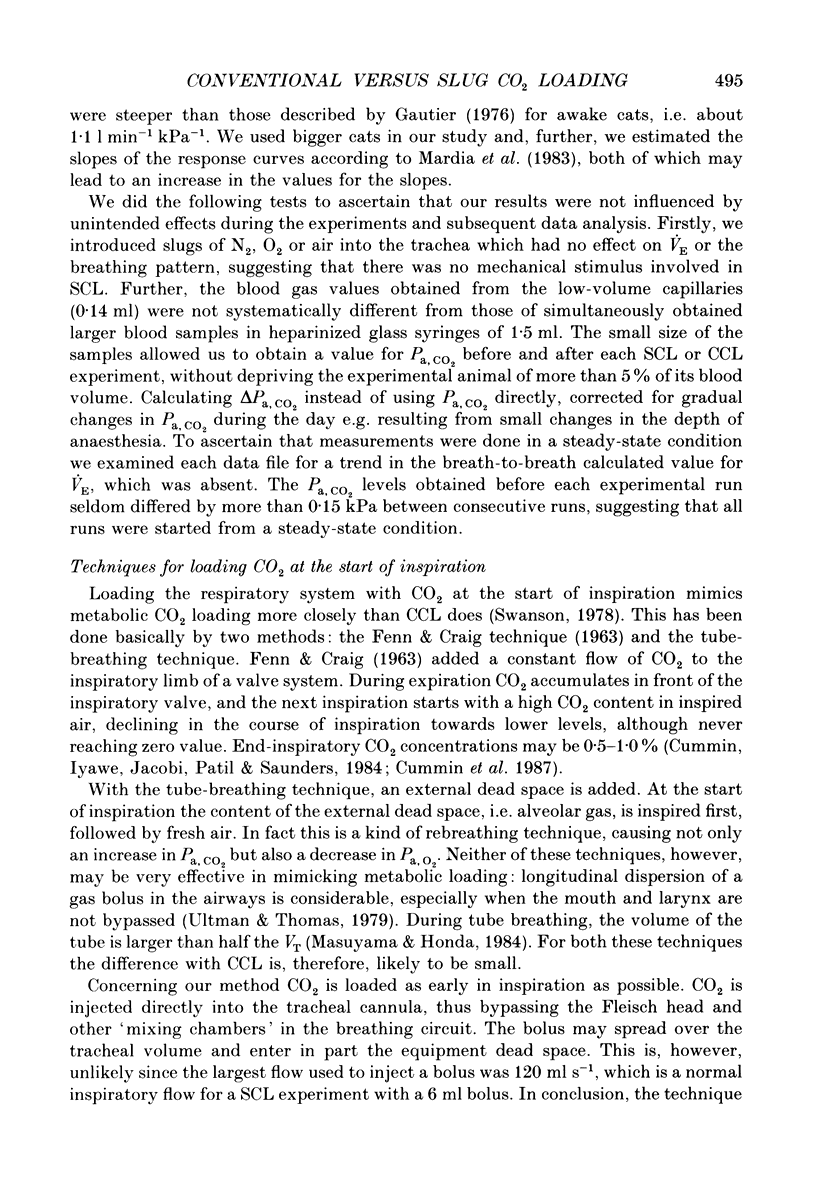
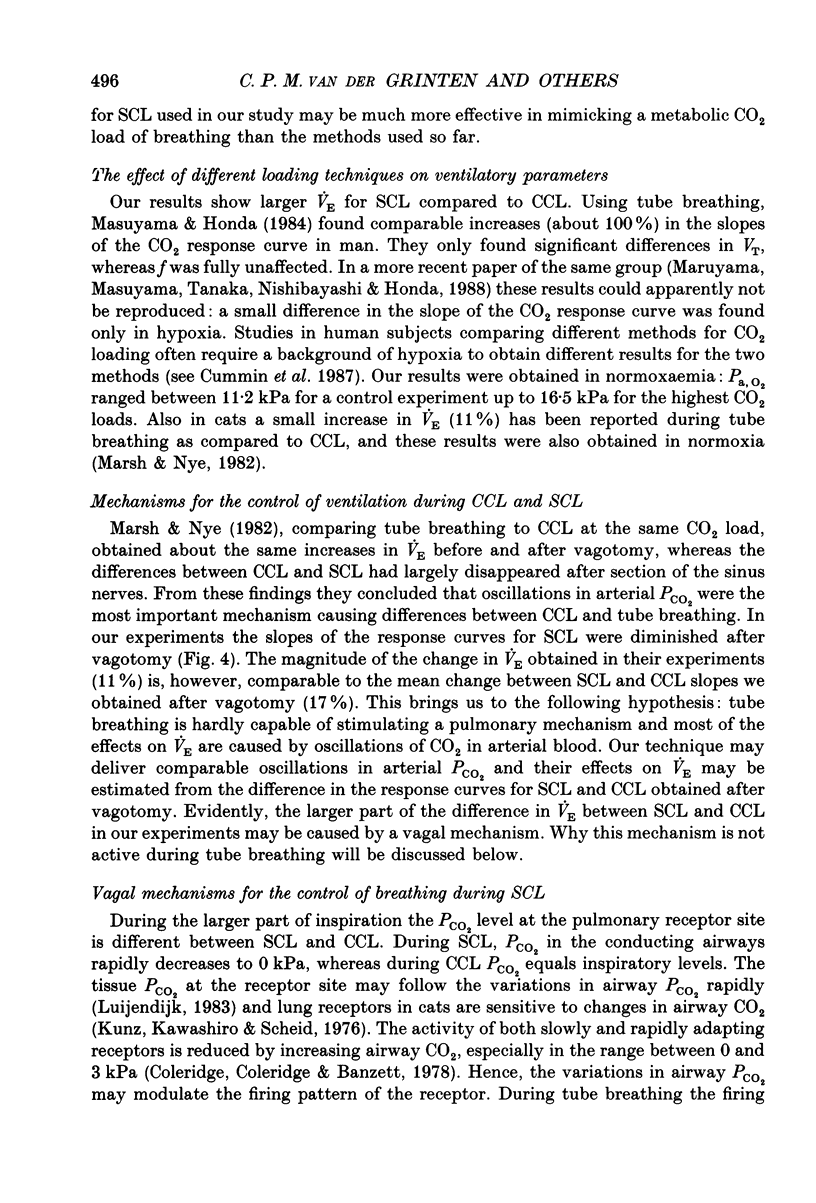
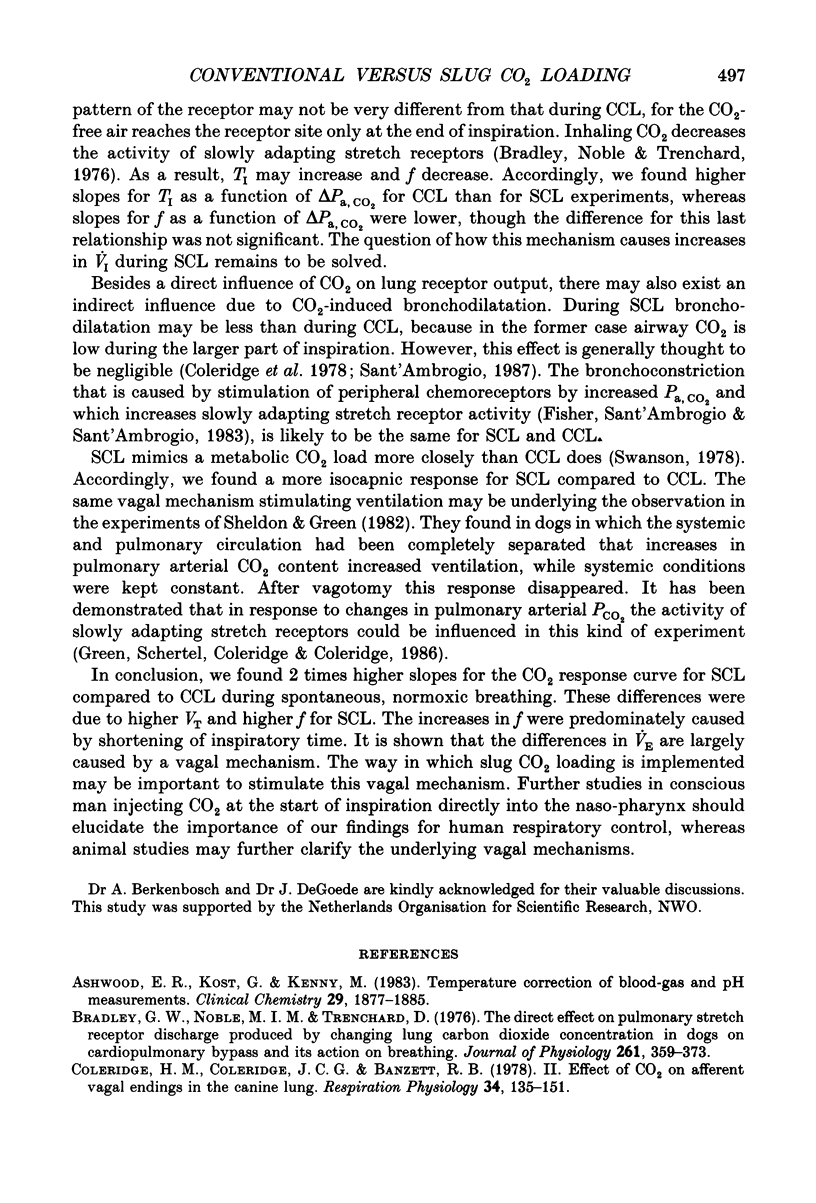
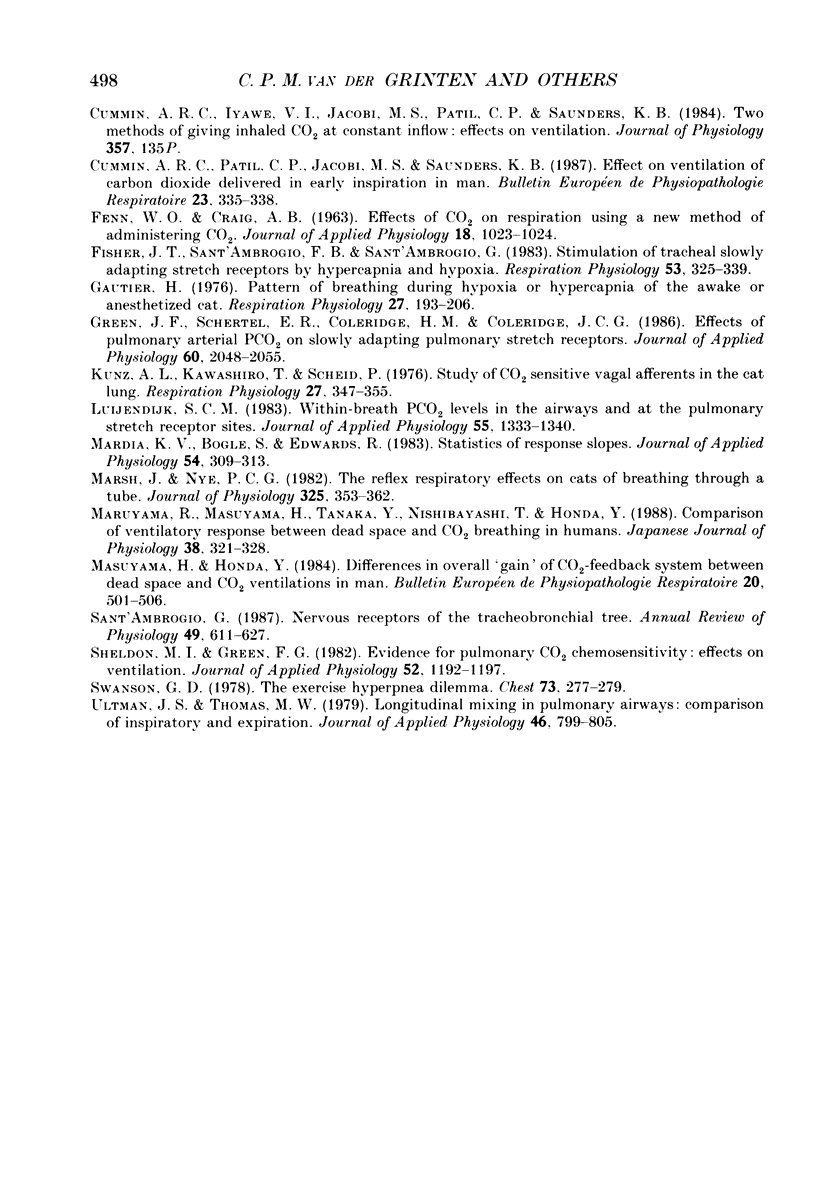
Selected References
These references are in PubMed. This may not be the complete list of references from this article.
- Ashwood E. R., Kost G., Kenny M. Temperature correction of blood-gas and pH measurements. Clin Chem. 1983 Nov;29(11):1877–1885. [PubMed] [Google Scholar]
- Bradley G. W., Noble M. I., Trenchard D. The direct effect on pulmonary stretch receptor discharge produced by changing lung carbon dioxide concentration in dogs on cardiopulmonary bypass and its action on breathing. J Physiol. 1976 Oct;261(2):359–373. doi: 10.1113/jphysiol.1976.sp011563. [DOI] [PMC free article] [PubMed] [Google Scholar]
- Coleridge H. M., Coleridge J. C., Banzett R. B. II. Effect of CO2 on afferent vagal endings in the canine lung. Respir Physiol. 1978 Jul;34(1):135–151. doi: 10.1016/0034-5687(78)90053-1. [DOI] [PubMed] [Google Scholar]
- Cummin A. R., Patil C. P., Jacobi M. S., Saunders K. B. Effect on ventilation of carbon dioxide delivered in early inspiration in man. Bull Eur Physiopathol Respir. 1987 Jul-Aug;23(4):335–338. [PubMed] [Google Scholar]
- FENN W. O., CRAIG A. B., Jr EFFECT OF CO2 ON RESPIRATION USING A NEW METHOD OF ADMINISTERING CO2. J Appl Physiol. 1963 Sep;18:1023–1024. doi: 10.1152/jappl.1963.18.5.1023. [DOI] [PubMed] [Google Scholar]
- Fisher J. T., Sant'Ambrogio F. B., Sant'Ambrogio G. Stimulation of tracheal slowly adapting stretch receptors by hypercapnia and hypoxia. Respir Physiol. 1983 Sep;53(3):325–339. doi: 10.1016/0034-5687(83)90123-8. [DOI] [PubMed] [Google Scholar]
- Gautier H. Pattern of breathing during hypoxia or hypercapnia of the awake or anesthetized cat. Respir Physiol. 1976 Aug;27(2):193–206. doi: 10.1016/0034-5687(76)90074-8. [DOI] [PubMed] [Google Scholar]
- Green J. F., Schertel E. R., Coleridge H. M., Coleridge J. C. Effect of pulmonary arterial PCO2 on slowly adapting pulmonary stretch receptors. J Appl Physiol (1985) 1986 Jun;60(6):2048–2055. doi: 10.1152/jappl.1986.60.6.2048. [DOI] [PubMed] [Google Scholar]
- Kunz A. L., Kawashiro T., Scheid P. Study of CO2 sensitive vagal afferents in the cat lung. Respir Physiol. 1976 Sep;27(3):347–355. doi: 10.1016/0034-5687(76)90063-3. [DOI] [PubMed] [Google Scholar]
- Luijendijk S. C. Within-breath PCO2 levels in the airways and at the pulmonary stretch receptor sites. J Appl Physiol Respir Environ Exerc Physiol. 1983 Oct;55(4):1333–1340. doi: 10.1152/jappl.1983.55.4.1333. [DOI] [PubMed] [Google Scholar]
- Mardia K. V., Bogle S., Edwards R. Statistics of response slopes. J Appl Physiol Respir Environ Exerc Physiol. 1983 Jan;54(1):309–313. doi: 10.1152/jappl.1983.54.1.309. [DOI] [PubMed] [Google Scholar]
- Marsh J., Nye P. C. The reflex respiratory effects on cats of breathing through a tube. J Physiol. 1982 Apr;325:353–362. doi: 10.1113/jphysiol.1982.sp014154. [DOI] [PMC free article] [PubMed] [Google Scholar]
- Maruyama R., Masuyama H., Tanaka Y., Nishibayashi Y., Honda Y. Comparison of ventilatory response between dead space and CO2 breathing in humans. Jpn J Physiol. 1988;38(3):321–328. doi: 10.2170/jjphysiol.38.321. [DOI] [PubMed] [Google Scholar]
- Masuyama H., Honda Y. Differences in overall 'gain' of CO2-feedback system between dead space and CO2 ventilations in man. Bull Eur Physiopathol Respir. 1984 Nov-Dec;20(6):501–506. [PubMed] [Google Scholar]
- Sant'Ambrogio G. Nervous receptors of the tracheobronchial tree. Annu Rev Physiol. 1987;49:611–627. doi: 10.1146/annurev.ph.49.030187.003143. [DOI] [PubMed] [Google Scholar]
- Sheldon M. I., Green J. F. Evidence for pulmonary CO2 chemosensitivity: effects on ventilation. J Appl Physiol Respir Environ Exerc Physiol. 1982 May;52(5):1192–1197. doi: 10.1152/jappl.1982.52.5.1192. [DOI] [PubMed] [Google Scholar]
- Swanson G. D. The exercise hyperpnea dilemma. Chest. 1978 Feb;73(2 Suppl):277–279. doi: 10.1378/chest.73.2.277. [DOI] [PubMed] [Google Scholar]
- Ultman J. S., Thomas M. W. Longitudinal mixing in pulmonary airways: comparison of inspiration and expiration. J Appl Physiol Respir Environ Exerc Physiol. 1979 Apr;46(4):799–805. doi: 10.1152/jappl.1979.46.4.799. [DOI] [PubMed] [Google Scholar]


